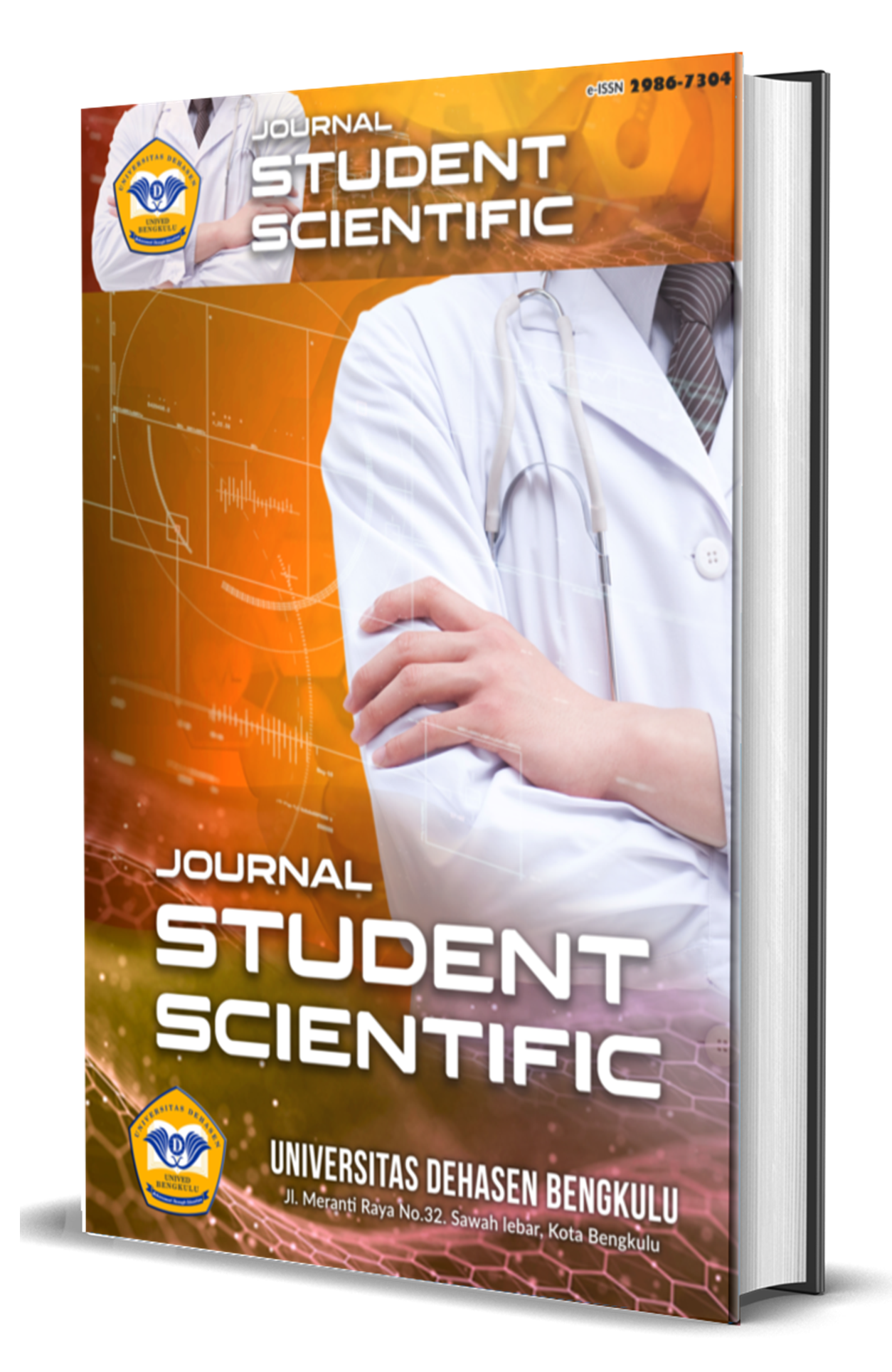Relationship Between Tooth Brushing Behaviour And Cariogenic Food Consumption Habits With Dental Caries Incidence Dental Caries In SD Negeri 50 Bengkulu City Year 2024
Abstract
The World Health Organization (2022) estimates that oral diseases affect nearly 3.5 billion people worldwide. Globally, an estimated 2 billion people suffer from permanent dental caries and 514 million children suffer from primary dental caries. Untreated dental caries (tooth decay) in permanent teeth is the most common health condition according to the Global Burden of Disease. The purpose of this study was to determine the relationship between tooth brushing behavior and cariogenic food consumption habits with the incidence of dental caries at SD Negeri 50, Bengkulu City in 2024. The research method used was descriptive quantitative research with a cross-sectional approach. The sampling technique used simple random sampling technique with a sample size of 69 people representing all students at SD Negeri 50, Bengkulu City. The results of the univariate test analysis showed that most respondents (53.6%) had sufficient tooth brushing behavior, most respondents (55.1%) had moderate cariogenic food consumption habits, and most respondents (66.7%) did not have dental caries. The results of the bivariate analysis obtained the results of tooth brushing behavior (0.000) and cariogenic food consumption habits (0.000) with the incidence of dental caries. There is a relationship between tooth brushing behavior and cariogenic food consumption with the incidence of dental caries at SD Negeri 50, Bengkulu City in 2024. The researcher suggests that for SD Negeri 50, Bengkulu City, the results of this study can be the basis for implementing guidance, coaching, and counseling programs on dental caries.
Downloads
Copyright (c) 2025 Cimiendy Selli Kurniamy, Ravika Ramlis, Handi Rustandi

This work is licensed under a Creative Commons Attribution-NonCommercial-ShareAlike 4.0 International License.







